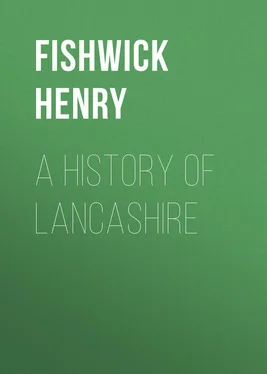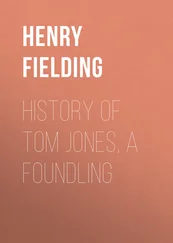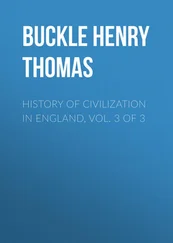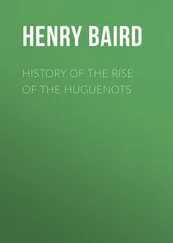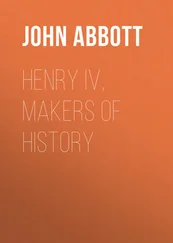Henry Fishwick - A History of Lancashire
Здесь есть возможность читать онлайн «Henry Fishwick - A History of Lancashire» — ознакомительный отрывок электронной книги совершенно бесплатно, а после прочтения отрывка купить полную версию. В некоторых случаях можно слушать аудио, скачать через торрент в формате fb2 и присутствует краткое содержание. Жанр: foreign_antique, foreign_prose, на английском языке. Описание произведения, (предисловие) а так же отзывы посетителей доступны на портале библиотеки ЛибКат.
- Название:A History of Lancashire
- Автор:
- Жанр:
- Год:неизвестен
- ISBN:нет данных
- Рейтинг книги:4 / 5. Голосов: 1
-
Избранное:Добавить в избранное
- Отзывы:
-
Ваша оценка:
- 80
- 1
- 2
- 3
- 4
- 5
A History of Lancashire: краткое содержание, описание и аннотация
Предлагаем к чтению аннотацию, описание, краткое содержание или предисловие (зависит от того, что написал сам автор книги «A History of Lancashire»). Если вы не нашли необходимую информацию о книге — напишите в комментариях, мы постараемся отыскать её.
A History of Lancashire — читать онлайн ознакомительный отрывок
Ниже представлен текст книги, разбитый по страницам. Система сохранения места последней прочитанной страницы, позволяет с удобством читать онлайн бесплатно книгу «A History of Lancashire», без необходимости каждый раз заново искать на чём Вы остановились. Поставьте закладку, и сможете в любой момент перейти на страницу, на которой закончили чтение.
Интервал:
Закладка:
One of the most extensive of the latter group is the one at Heathwaite Fell, where on the top of an elevated piece of moorland is a site near half a mile long by 700 yards wide, which has been encompassed by a stone wall originally 2 feet thick. This enclosed space has been subdivided into five or more smaller enclosures by cross walls, and each of these divisions had its own water–supply. The apex of the ground has been cut by a wall, and this encloses the north elevation of the site. About midway along the west side another wall leaves the outer one and crosses the summit, and cuts off the west angle. On the centre of this wall are situated the “homesteads” or headquarters of the settlement. The homesteads are situated upon the south–east slope of the hill, and upon the cross wall dividing off the western ward. They consist of seven walled courts or yards, three smaller chambers, and two very small mural huts and chambers. The walls of these are usually of dry–built masonry, and are in some places 3 feet thick and in others from 6 to 7 feet.
The main entrance to these enclosures is on the south. The mural huts are placed at the north–west angle of the west court and the south–west angle of the south court. The first is the most interesting; it is contained in a small rectangular block of masonry filling up the angle, and the plan of the chamber itself is that of a joiner’s square. There is no trace left of any covering to these huts, but they were probably covered with stone flags or branches of trees. Within and without the enclosures are cairns of all sizes, one of which is known as The Giant’s Grave. It is remarkable that all the settlements in the Furness district are found on the fells, and never in the dales, some of them being 300 feet above the sea–level. Of any actual defensive structure there is no trace. The settlers here evidently buried their dead close to their homes, and from the calcined bones found it is clear that the bodies were burnt.
These earthen burial–mounds are, however, very scarce in the district; rude–stone cists have been unearthed, but no trace of metals or ornamental workmanship except a few pieces of rude pottery.
At Holme Bank, Urswick, the rampart of earthed stones encloses a five–sided figure, within which are traces of cross walls, the general plan of which points to the site of an early settlement. The rampart or entrenchment discovered at Hawkeshead Park is of a similar character. At Scrow Moss, near the foot of Coniston Old Man, is another of these enclosures, a drawing of which is given in Archæologia (vol. liii., part 2). At Dunnerdale Fell is an enclosure very similar to that found at Heathwaite, though much smaller, the central homestead being formed by a single wall, near to which are several cairns and remains of walls. On Birkrigg Common, at a place called Appleby Slack, is another of these small enclosures, consisting of a single rampart or vallum of earth, enclosing a pear–shaped area, not far from which is a tumulus, and about half a mile to the south–east is a double concentric stone circle. Concerning these various remains in the Furness district, the writer of the exhaustive article in Archæologia 5 5 H. Swainson Cowper, Esq., F.S.A.
just referred to is of opinion that their elevated position is due to the fact that the lower ground was at that period such a dense mass of scrub and jungle that it was utterly untenable for residential purposes. These various enclosures do not appear to have been forts, as the homesteads themselves were all on the sloping sides of the hills, but were rather the dwelling–places of a very early tribe of settlers, who were living at peace with their neighbours, and had, therefore, no need of a system of defence, such as we find traces of in other parts of the county. The plan of these settlements was simple – the smaller courts were the living apartments, and were no doubt covered with some kind of roof; the larger enclosures were for the cattle, or possibly for the lower orders of the tribes who held the place.
Many tumuli belonging to the early British settlers have been opened, as at Briercliffe, near Burnley, where the covering of earth had been partly wasted away, leaving a rudely–marked circle of stone, near to which in 1885 was found a sun–baked hand–made urn of pre–Roman origin, containing the remains of an adult and a child. At Wavertree, near Liverpool, in 1867, a large tumulus, since called Urn Mound, was opened, and six urns containing partly–calcined human bones were discovered, all of which were early British. Near to these were found a flint arrow–point and several “scrapers.” 6 6 Hist. Soc. of Lanc. and Ches. , xx. 131.
Canoes assigned to this period have not infrequently been dug out of peat which once formed the bottom of lakes, such as Marton Mere, in Poulton–le–Fylde, and at the estuary of the Ribble, near Penwortham. A very remarkable bronze beaded torque of the late Celtic period was found by some workmen in 1832 at Mowroad, in the parish of Rochdale. This ornament had probably been worn round the neck of some person of rank; it weighed one pound five ounces, was made of bronze, and was of superior workmanship and ornamentation. 7 7 Engraved in “History of Rochdale,” p. 5. See also Archæologia , xxv. 595.
The British tribes did not congregate in such numbers as to establish anything like a town, or even a large village, in these Northern parts; but no doubt when the Romans took possession they found here and there clusters of hut dwellings, which the geographer Ptolemy afterwards described as British settlements. One of these was Regodunum, which was somewhere near the mouth of the Ribble, perhaps at Walton–le–Dale. The author just referred to (who lived about A.D. 140) mentions the estuaries on the west coast, three of which, from the latitude and longitude given, clearly refer to Lancashire rivers; they are named as the Estuary Moricambe, the Haven of the Setantii, and the Estuary Belisama. Belisama was the old name for the Mersey; the Haven of the Setantii was at or near the mouth of the Ribble; and the other estuary was at the conflux of the Kent with the waters of Morecambe Bay. 8 8 See Transactions of Hist. Soc. of Lanc. and Ches. , xxx. 81.
At Walton–le–Dale and at Lancaster the Romans are believed to have founded their stations on the sites of British settlements, as in both these places have been found celts, arrow–heads, cinerary urns, and other signs of the earlier race.
CHAPTER III
THE ROMANS AS CONQUERORS AND RULERS
The coming of Julius Cæsar in August, B.C. 55, with his legions of Roman soldiers to punish the men of Kent for having sent assistance to one of the Gallic tribes, the Veneti , then at war with Rome, was what led on to the subsequent subjugation of the whole of Britain. This did not, however, take place for nearly a century afterwards, as, on the Britons undertaking to pay tribute, the invaders withdrew. In A.D. 43 the Emperor Claudius appears to have looked at this country with an envious eye, and finally decided to annex it to Rome; and with this view he sent his General, Aulus Plautius, with an army of some 48,000 men, to subdue the natives, who were, however, found to be a race not easily conquered. After severe fighting, he entrenched himself on the bank of the Thames, where he was joined by the Emperor himself in the following year. Step by step, slowly but steadily, the invaders made their way northwards.
The building of a line of forts by the Imperial Legate from the Severn to the Nene, thus dividing the country, led to a rebellion of the tribe of Cenimagni (or Iceni), the dwellers in what is now Norfolk or Cambridgeshire. In this case the natives were again unsuccessful; and in recording their defeat Tacitus 9 9 “Annals,” xii. 31.
first mentions the Brigantes in terms which clearly indicate that even before this time they had given the Romans some trouble. The passage runs: “He (Ostorius Scapula) now approached the sea which washes the coast of Ireland, when commotions, begun amongst the Brigantes, obliged the General to return thither, as he had formed a settled determination not to prosecute any new enterprise till his former were completed and secure. The Brigantes, indeed, soon returned to their homes, a few who raised the revolt having been slain and the rest pardoned.”
Интервал:
Закладка:
Похожие книги на «A History of Lancashire»
Представляем Вашему вниманию похожие книги на «A History of Lancashire» списком для выбора. Мы отобрали схожую по названию и смыслу литературу в надежде предоставить читателям больше вариантов отыскать новые, интересные, ещё непрочитанные произведения.
Обсуждение, отзывы о книге «A History of Lancashire» и просто собственные мнения читателей. Оставьте ваши комментарии, напишите, что Вы думаете о произведении, его смысле или главных героях. Укажите что конкретно понравилось, а что нет, и почему Вы так считаете.
